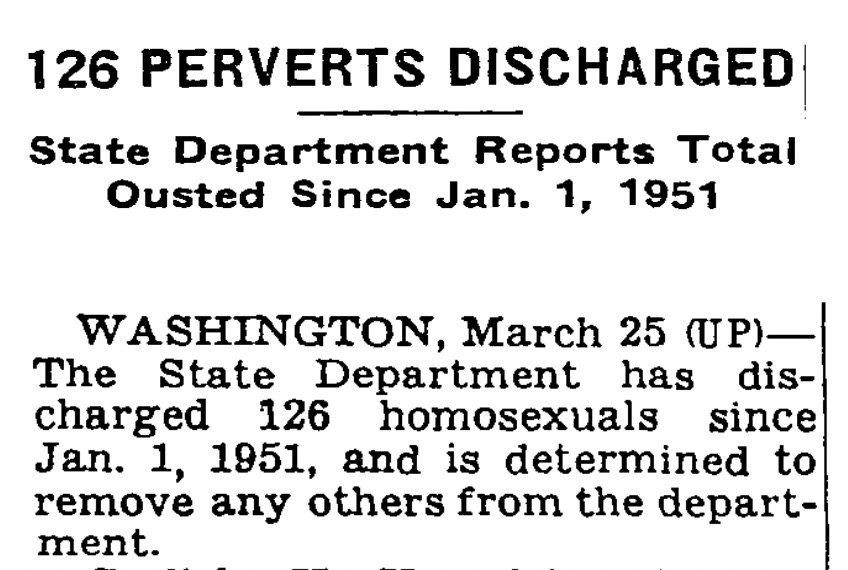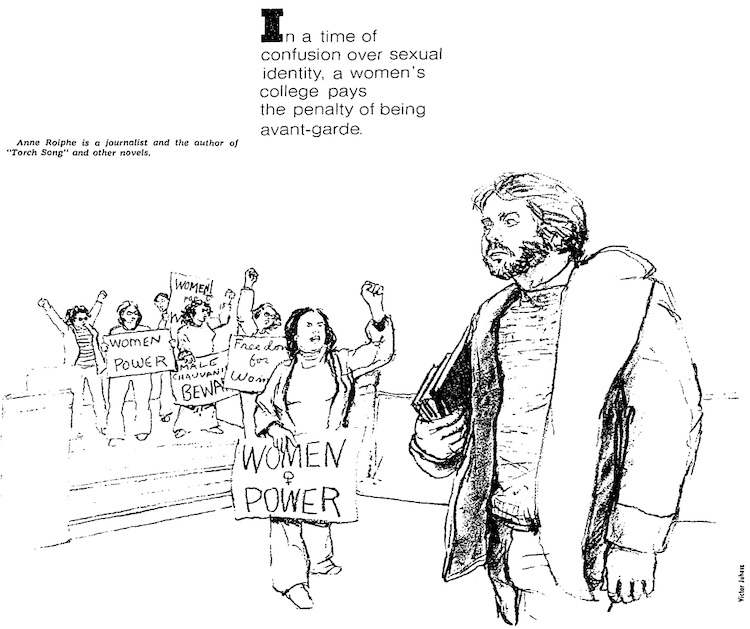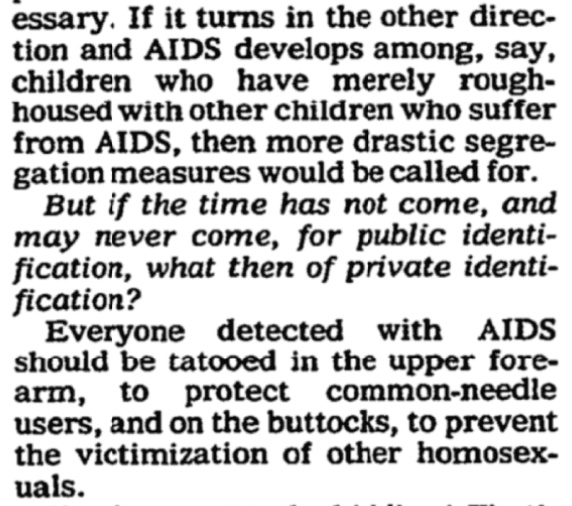On March 11, 1998, New York Times copy editor Donna Cartwright posted a letter on bulletin boards on every floor of the paper’s newsroom. The letter began:
To my colleagues at the New York Times: in the 21 years we’ve worked together, we have shared much hard work and many rewarding experiences. I’m writing this now to inform you of a significant change in my life that will affect our relationship and to ask for your understanding and support. After much reflection and inner struggle, I have decided to resolve a longstanding conflict in my life by beginning to live full-time as a woman starting in about two months’ time.
With that, Cartwright became the first person at the Times to come out as transgender. Nobody transitioning in 2023 is guaranteed an easy ride, let alone in 1998. But despite some challenges—management was understanding but not particularly helpful, and she kept having to remind people not to misgender her—Cartwright found a mostly welcoming response. (She also briefly found herself in the limelight, even scoring an appearance on The View.)
“I would say the great majority of my coworkers were highly supportive,” she told me. “And even some relatively conservative people in union leadership were also helpful and supportive.”
These days, though, Cartwright—who left the Times in 2006 after nearly 30 years on the job—is troubled by where the paper finds itself on LGBTQ rights, especially when it comes to its coverage of trans people.
“The feeling that I get most often is annoyance,” she said. “If this was about a high school teacher who was being persecuted for believing in dinosaurs, the Times would think that that was ridiculous. But…LGBT people and trans people—it seems like we haven’t quite made the grade yet. We have to keep swimming upstream.”
Cartwright is not alone. There has been deep dismay about the Times’ persistently skeptical coverage of trans identity, which has come at a time when trans people’s right to exist in public is under attack across the country. Last week, the opposition to the paper’s seeming institutional animus toward trans rights burst into widespread public view, when thousands of Times contributors and over 30,000 supporters signed an open letter urging the paper to rethink its coverage. (Full disclosure: I added my name to the letter.)
Popular
"swipe left below to view more authors"Swipe →
In response, the Times dismissed the letter—and a separate one sent by the LGBTQ rights group GLAAD—as coming from people with an “advocacy mission,” as opposed to its own “journalistic mission.” The paper’s executive editor, Joseph Kahn, then sent a furious note to his staffers, some of whom had signed the letter from journalists, warning them, “We do not welcome, and will not tolerate, participation by Times journalists in protests organized by advocacy groups or attacks on colleagues on social media and other public forums.”
Cooler heads might have warned Kahn that, in his rush to defend the paper’s antagonism toward an LGBTQ civil rights movement, he risked the kind of infamy that now haunts one of his most prominent predecessors, Abe Rosenthal.
Rosenthal, who led the Times from 1969 to 1986, is perhaps most frequently remembered now for something he adamantly refused to do: cover the LGBTQ rights movement, particularly the AIDS crisis, with the scope or respect it deserved. (The epitaph on his tombstone, he kept the paper straight, now seems like a sick joke.)
Instead, the Times under Rosenthal kept queer people at arm’s length. It even refused to use the word “gay” in its pages until June 1987, doggedly sticking to the more clinical “homosexual.” And it underplayed the spread of AIDS, waiting nearly two years after its first, now-legendary item broaching the subject to run a story about AIDS on its front page.
At the time, plenty of people warned the paper that it was on the wrong side of history. But the Times ignored them.
Now, decades later, Rosenthal’s homophobia, and the Times’ failure to properly chronicle the lives—and the deaths—of LGBTQ people at such a pivotal moment, is regarded as a low point in the paper’s history. The Times itself has issued mea culpas about its mishandling of the era. And the idea that gay people and lesbians deserve equal rights is uncontroversial. The Times even sells coffee table books commemorating Pride.
It is somewhat astonishing, then, that in its coverage of trans people—and its patronizing wrath toward its critics—the Times is repeating the same mistakes it made under Rosenthal. The parallels between its current anti-trans coverage and its past coverage of gay rights are obvious. But the Times appears blind to them—and blind to the fact that, in its obstinance and its arrogance, it is once again placing itself in a situation that it will later regret.
The oldest mention I could find of the word “homosexual” in the Times’ archives was in 1914. It appeared in an article about World War I by the playwright George Bernard Shaw. “[W]e must trust to the march of Democracy to de-Russianize Berlin and de-Prussianize Petrograd, and to put the nagaikas of the Cossacks and the riding-whips with which Junker officers slash German privates, and the forty tolerated homosexual brothels of Berlin, and all the other psychopathic symptoms of overfeeding and inculcated insolence and sham virility in their proper place, which I take to be the dustbin,” Shaw wrote.
Ironically, Shaw was a supporter of gay rights, so his seemingly irate tone was most likely satirical. Rather than follow his more enlightened path, though, the Times charged hard in the other direction for decades. The paper’s archives are filled with casually bigoted items about queer people—“126 PERVERTS DISCHARGED,” read a 1952 headline about an anti-gay purge at the State Department—and the sort of pseudoscientific babblings about the psychological sickness of homosexuality that pervaded mid-20th-century discourse. (The Times was by no means alone in this approach; The Nation, for instance, ran a 1957 cover story titled “The Homosexual: Challenge to Science.”)
As the gay rights movement gained steam in the 1950s and 1960s, the Times reacted with alarm. Homosexuality was seemingly a big concern everywhere: It was “troubling Britons” in 1953, causing panic in Cuba in 1965, and infusing West Berlin with a “loose morality” in 1967.
But the problem wasn’t just international. It was right here in America. “Growth of Overt Homosexuality In City Provokes Wide Concern,” blared a lengthy front-page story in 1963. (Sample passage: “The absence of any legal ties, plus the basic emotional instability that is inherent in many homosexuals, cause most such homosexuals’ partnerships to founder on the jealousies and personality clashes that a heterosexual union would survive. Hence, most homosexuals are condemned to a life of promiscuity—the cruising of bars seeking casual partners.”) The idea for the piece reportedly came directly from Rosenthal.
What’s more, the dreaded homosexuals seemed to be… OK with being gay. “Homosexuals Proud of Deviancy, Medical Study Finds,” another front-page story from 1964 lamented. Even more concerning, the study’s findings “were said to apply to homosexuals everywhere, not just in New York.”
Perhaps the best example of this extended freakout can be found in a 1963 piece by theater critic Howard Taubman, who went into great detail about all the ways his readers would be able to spot any homosexuality that had been snuck into the latest plays:
Look out for the male character who is young, handsome, remote and lofty in a neutral way. Note whether his very presence tends to make the women he encounters so protective that they must mother him or so twitchy that his glance or touch turns them instantly into Jezebels. Note also how often he prefers to keep his distance from the suddenly sultry females.…
Be suspicious of the compulsive slut, whether professional or amateur. who represents total disenchantment with the possibility of a fulfilled relationship between man and woman.
Such articles now carry an air of high camp, but hatred still courses through them. (The paper’s coverage of trans issues was much more minuscule, and usually focused on scientific developments or mildly prurient personal stories, though there were also notable attempts to approach trans people with a degree of empathy.)
As the 1970s progressed, the explosion of the LGBTQ liberation movement began slowly making its way into the pages of the Times. In 1971, the paper published a first-person rumination by Merle Miller about gay life in New York. The article has not dated incredibly well, but having anything in the Times about queer people that wasn’t tinged with disgust was a major change. The word “gay” began appearing in the paper with more frequency too.
However, as Times reporter David Dunlap recounted in 2017, that all came to a halt in 1975, when a piece about an all-gay cruise so offended the top brass that they ordered a clampdown on such articles in the future and summarily banned the word “gay” from appearing in any story outside of quotation marks. The ban lasted until Rosenthal’s departure, and it ensured that even, say, an in-depth look at how corporate America was courting the queer market was tinged with a kind of anthropological distance.
At the same time, the paper continued to be a haven for rank bigotry, as in a virulently homophobic 1977 feature by Anne Roiphe about the supposed “trouble” at Sarah Lawrence College being caused by the presence of lesbians on campus. (“[I]t might be possible, without reversing the sexual revolution or infringing on anyone’s civil rights, to suggest an effort to control the visibility of homosexual activity, so that the campus can again attract some of the students who are now frightened off,” Roiphe advised.)
The signal to queer people within the Times was clear: This is not a place for you. As journalist Michelangelo Signorile recounted in a landmark 1992 piece, LGBTQ people at the Times “say that they were immensely frightened and frustrated under Rosenthal.… They couldn’t complain because to do so they’d have to come out. But they felt they couldn’t come out because it would definitely jeopardize their jobs.”
This history is a cause of shame and embarrassment at the Times now. But the paper’s failure to properly cover the AIDS crisis was the nadir of its handling of queer issues.
On July 3, 1981, the item “RARE CANCER SEEN IN 41 HOMOSEXUALS” ran on page A20. The Times waited until May 25, 1983, to move AIDS to its front page, where it noted that 558 deaths had been recorded thus far in the United States. Even then, readers had to get to the seventh paragraph to be told that the disease was mostly killing gay men.
The Times continued to falter as the crisis deepened. As Cartwright put it, “There was this kind of squeamishness in the news coverage about people who were seen as having a disease that many people thought of as kind of shady.”
You had to be a kind of Kremlinologist of queerness to read between the lines of scores of Times obituaries, which bent every which way to avoid saying that someone had died of AIDS. The paper infamously allowed William F. Buckley Jr. to demand that people with AIDS be tattooed, like concentration camp victims, to mark them out from the rest of society.
None of this went unnoticed. The Times faced intense backlash from the LGBTQ community for its indifferent coverage. But the response from the paper was hostile and unchanging. When then-theater critic Frank Rich mentioned in a review of Larry Kramer’s 1985 play The Normal Heart that the play accused the Times of ignoring AIDS, his editors went over his head and attached a note to his review in which a spokesman denied the allegations. (They also gave then-Mayor Ed Koch, a closeted gay man whose failures over AIDS were also attacked in the play, a platform to respond to the review.)
By 1992, when Signorile wrote his piece about queer people at the Times, dramatic changes were underway. Rosenthal had been replaced by Max Frankel, who promptly removed the “gay” ban, and reporters like Jeffrey Schmaltz, who would die of AIDS in 1993, were forcing the paper to confront the presence of LGBTQ employees, and AIDS, within its own walls. Even Rosenthal, who was by then an op-ed columnist at the Times, had modified his tune, telling Signorile that he had perhaps erred in some of his decisions about coverage of queer issues.
Six years later, Cartwright went public with her transition, something which would have been unthinkable a decade before. The Times, it would seem, was catching up with the times.
Now, nearly a quarter-century after Cartwright came out, the Times is once again a center of hostility toward a marginalized queer community. Once again, people inside and outside the paper are pleading with management to change. And once again, the Times is putting its barriers up. It is as though it has learned nothing from its own history.
We’ll never know how things would have been different if the Times had chosen to use its hugely influential platform to sound the alarm about AIDS in a concerted way. We only know what happened when it didn’t. Similarly, it’s impossible to quantify how the current wave of anti-trans hysteria would be altered if the Times decided to stop treating the existence of trans people as a knotty problem for society to solve. But the paper’s insistence on its current trajectory is, as the authors of the open letter noted, giving elite cover and ammunition to the far right, which has taken to using Times stories to bolster its anti-trans crusading. There is no hint that the Times leadership is worried about any of this.
One part of Rosenthal’s 1992 conversation with Signorile is especially pertinent today. Asked why he maintained the ban on the word “gay,” Rosenthal said that he “felt at that time that the Times should not use a word for political purposes until that word has become accepted as part of the language.”
There are clear echoes of this kind of blinkered loftiness in Joseph Kahn’s acid references to “advocacy groups” in his staff memo about the paper’s trans coverage. Thirty years after Rosenthal’s admission, the Times is still trapped in the same bunker when it comes to LGBTQ issues. It is still at pains to distance itself from what it clearly believes to be an activist mob that doesn’t understand what Real Journalism is all about. It is still so instinctively appalled at the notion that its critics might be right that it is choosing the path of aristocratic contempt.
Trans people are currently experiencing a punishing, traumatic assault on their very right to be alive. But if history is any guide, they will eventually win the battle to be treated as full human beings. What will the Times do at that point? There is a good chance that we will get a new series of hand-wringing stories about how the paper fell short at a moment when so many people desperately needed it to step up. There is also a good chance that the Times will attempt to explain its behavior by saying that anti-trans panic was just in the air back then, part of the intrinsic way of things. But just as with its coverage of queer life and AIDS in the past, people will know better.
The Times is making choices right now that, with any luck, it will come to lament. For that to happen, as many people as possible must follow the lead of the people who wrote last week’s letter and continue to hold the Times accountable.
One person who was heartened by the letter was Donna Cartwright. “That was wonderful,” she said. “I was very glad that there was some group of people…who are saying that the Times and society generally need to do more, not less.” She added that the letter would help remind trans people that there is a community willing to fight alongside them.
“I think there are a lot of trans people who kind of look for support,” she said. “It can be pretty scary when you think you’re alone, even if you weren’t.”
Clarification: This piece has been updated to make clear that the referenced article by George Bernard Shaw was most likely satirical.






